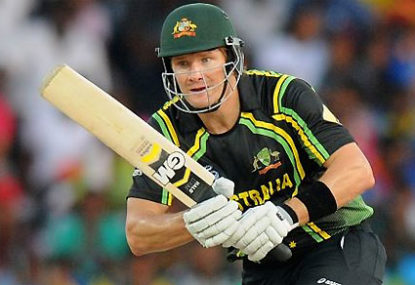WATCH: Virat Kohli's radar-like precision from the deep produces brilliant run out
After posting 92 with the bat, the RCB star was having an equally brilliant day in the field.

Following the Australian cricket team right now is akin to riding on a roller coaster.
An Australian fan would have been optimistic about their team after a dominant start against world number one team South Africa.
Even a series deciding thumping in Perth did not dampen enthusiasm, as easy fodder Sri Lanka expectantly restored the collective swagger.
Unfortunately for baggygreen aficionados, the Australian summer was fool’s gold. An arduous Indian tour exposes fragility, and consequently Australia has been exposed as fraudulent amateurs on and off the field during their nightmare voyage.
The farcical ‘homeworkgate’ has lurched Australian cricket into an embarrassing spiral. It has been many moons since Australian cricket has been an international punchline.
The good news for Australian supporters? Life, thus sport, can be salvaged by silver linings. Perhaps, as Mickey Arthur stated, the stern disciplinary action will become the “line in the sand” moment Australian cricket obviously craves.
Time will tell.
‘Homeworkgate’ may also eventually be remembered for the end of the Shane Watson delusion. I know, Watson’s international career has more chapters to be written for he revels in the coloured craziness of the shorter formats.
Watson is arguably T20’s most destructive all-round player, while he is indisputably on the shortlist of best ODI performers.
But Watson’s refusal to do his homework may have hastened the termination of his undistinguished career in the whites.
Watson has represented Australian cricket’s great hope for the past decade. The great Taylor/Waugh teams eviscerated opposition in their wake but lamented the lack of a genuine all-rounder.
Despite decades of dominance, Australian cricket had been unable to discover a precocious all-rounder since the days of Benaud and Davidson.
Watson was earmarked to reverse that blight. He played Sheffield Shield cricket as a teenager and was nurtured into the Australian setup as a 20-year-old on the tour of South Africa in 2002.
Three years later Watson made his premature Test debut against Pakistan at the SCG.
At the same time England’s talisman Andrew Flintoff was taking international cricket by storm with his match-winning abilities with both willow and rock. Unsurprisingly, Flintoff was the catalyst for England’s Ashes redemption in 2005 and the defeat left Australia scrambling to accelerate Watson’s development.
While he was carving a handy ODI niche as a swashbuckling all-rounder, his Test career stalled due to a plethora of injuries. It appeared the chiselled mannequin had been carved of jelly.
Watson made an unlikely Test resurrection as an opener in the finale of the ’09 Ashes. For the next 18 months it appeared Watson had found his forte in the Australian line-up as an aggressive opening bat and dangerous medium/fast seamer.
Hope materialised in the form of consecutive Border Medals.
But the injury curse reared its ugly head and without a Test ton in three years, Watson’s all-round versatility was eroded when he focused on being a specialist bat. It was a spectacular failure.
Australia’s dearth of talented young batsmen prolonged Watson’s career. A specialist bat should not survive averaging 25 in the past two years. But Watson escaped hefty public and media criticism because, when on song, his batting was so aesthetically pleasing.
Possessing a solid technique, combined with booming drives and commanding back foot shots, it was easy to become besotted with Watson. The infatuation masked his inglorious Test statistics – 36 average, two centuries in 40 Tests.
What’s the dirty little secret for Australian fans? Watson wasn’t meant to lead them back to the top of the Test tree.
Andy Dufresne famously said in The Shawshank Redemption: “Hope is a good thing. Maybe the best of good things. And no good thing ever dies”.
For a sports fan, there are certain players who embody hope. They are the type of player whose infinite talent could materialise at any moment, but frequently disappoints.
Yet, they are continually selected based on that hope. It’s hard to abandon hope when time and energy has been invested.
So, Watson kept playing. Despite his failings with the bat. Despite his alleged poor relationship with his captain. Despite his temperamental behaviour, which led Australia’s high performance manager Pat Howard to label Watson “sometimes a team player”.
I think Andy Dufresne was wrong. Hope is not always a good thing. Sometimes it is an illusion.
In the case of Shane Watson, perhaps it is best for Australian cricket if he never again wears a baggygreen. Attention can be diverted into cultivating new talent.
Then the Shane Watson Test delusion can rest in peace.
I hope.